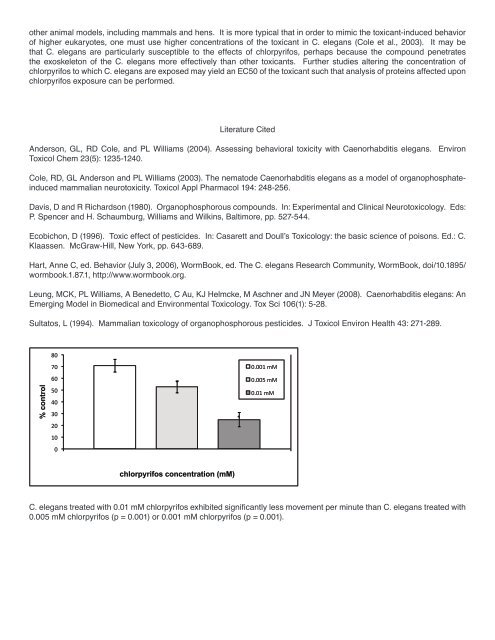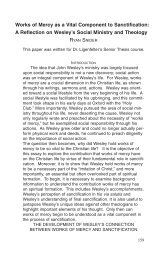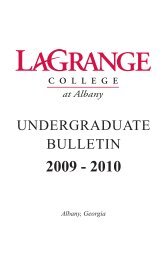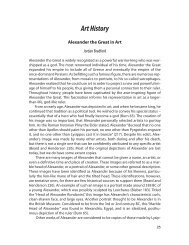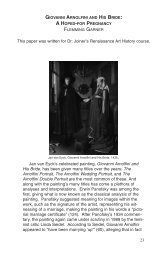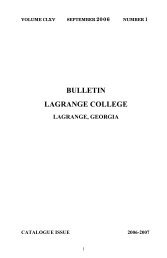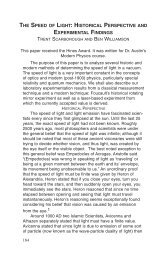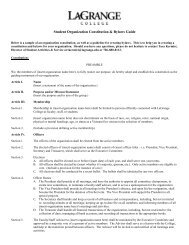Locomotive Activity as an Indicator of Acute Chlorpyrifos Toxicity in ...
Locomotive Activity as an Indicator of Acute Chlorpyrifos Toxicity in ...
Locomotive Activity as an Indicator of Acute Chlorpyrifos Toxicity in ...
You also want an ePaper? Increase the reach of your titles
YUMPU automatically turns print PDFs into web optimized ePapers that Google loves.
other <strong>an</strong>imal models, <strong>in</strong>clud<strong>in</strong>g mammals <strong>an</strong>d hens. It is more typical that <strong>in</strong> order to mimic the toxic<strong>an</strong>t-<strong>in</strong>duced behavior<br />
<strong>of</strong> higher eukaryotes, one must use higher concentrations <strong>of</strong> the toxic<strong>an</strong>t <strong>in</strong> C. eleg<strong>an</strong>s (Cole et al., 2003). It may be<br />
that C. eleg<strong>an</strong>s are particularly susceptible to the effects <strong>of</strong> chlorpyrifos, perhaps because the compound penetrates<br />
the exoskeleton <strong>of</strong> the C. eleg<strong>an</strong>s more effectively th<strong>an</strong> other toxic<strong>an</strong>ts. Further studies alter<strong>in</strong>g the concentration <strong>of</strong><br />
chlorpyrifos to which C. eleg<strong>an</strong>s are exposed may yield <strong>an</strong> EC50 <strong>of</strong> the toxic<strong>an</strong>t such that <strong>an</strong>alysis <strong>of</strong> prote<strong>in</strong>s affected upon<br />
chlorpyrifos exposure c<strong>an</strong> be performed.<br />
Literature Cited<br />
Anderson, GL, RD Cole, <strong>an</strong>d PL Williams (2004). Assess<strong>in</strong>g behavioral toxicity with Caenorhabditis eleg<strong>an</strong>s. Environ<br />
Toxicol Chem 23(5): 1235-1240.<br />
Cole, RD, GL Anderson <strong>an</strong>d PL Williams (2003). The nematode Caenorhabditis eleg<strong>an</strong>s <strong>as</strong> a model <strong>of</strong> org<strong>an</strong>ophosphate<strong>in</strong>duced<br />
mammali<strong>an</strong> neurotoxicity. Toxicol Appl Pharmacol 194: 248-256.<br />
Davis, D <strong>an</strong>d R Richardson (1980). Org<strong>an</strong>ophosphorous compounds. In: Experimental <strong>an</strong>d Cl<strong>in</strong>ical Neurotoxicology. Eds:<br />
P. Spencer <strong>an</strong>d H. Schaumburg, Williams <strong>an</strong>d Wilk<strong>in</strong>s, Baltimore, pp. 527-544.<br />
Ecobichon, D (1996). Toxic effect <strong>of</strong> pesticides. In: C<strong>as</strong>arett <strong>an</strong>d Doull’s Toxicology: the b<strong>as</strong>ic science <strong>of</strong> poisons. Ed.: C.<br />
Kla<strong>as</strong>sen. McGraw-Hill, New York, pp. 643-689.<br />
Hart, Anne C, ed. Behavior (July 3, 2006), WormBook, ed. The C. eleg<strong>an</strong>s Research Community, WormBook, doi/10.1895/<br />
wormbook.1.87.1, http://www.wormbook.org.<br />
Leung, MCK, PL Williams, A Benedetto, C Au, KJ Helmcke, M Aschner <strong>an</strong>d JN Meyer (2008). Caenorhabditis eleg<strong>an</strong>s: An<br />
Emerg<strong>in</strong>g Model <strong>in</strong> Biomedical <strong>an</strong>d Environmental Toxicology. Tox Sci 106(1): 5-28.<br />
Sultatos, L (1994). Mammali<strong>an</strong> toxicology <strong>of</strong> org<strong>an</strong>ophosphorous pesticides. J Toxicol Environ Health 43: 271-289.<br />
80 <br />
70 <br />
0.001 mM <br />
% control<br />
60 <br />
50 <br />
40 <br />
30 <br />
20 <br />
*<br />
*<br />
0.005 mM <br />
0.01 mM <br />
10 <br />
0 <br />
chlorpyrifos concentration (mM)<br />
C. eleg<strong>an</strong>s treated with 0.01 mM chlorpyrifos exhibited signific<strong>an</strong>tly less movement per m<strong>in</strong>ute th<strong>an</strong> C. eleg<strong>an</strong>s treated with<br />
0.005 mM chlorpyrifos (p = 0.001) or 0.001 mM chlorpyrifos (p = 0.001).


